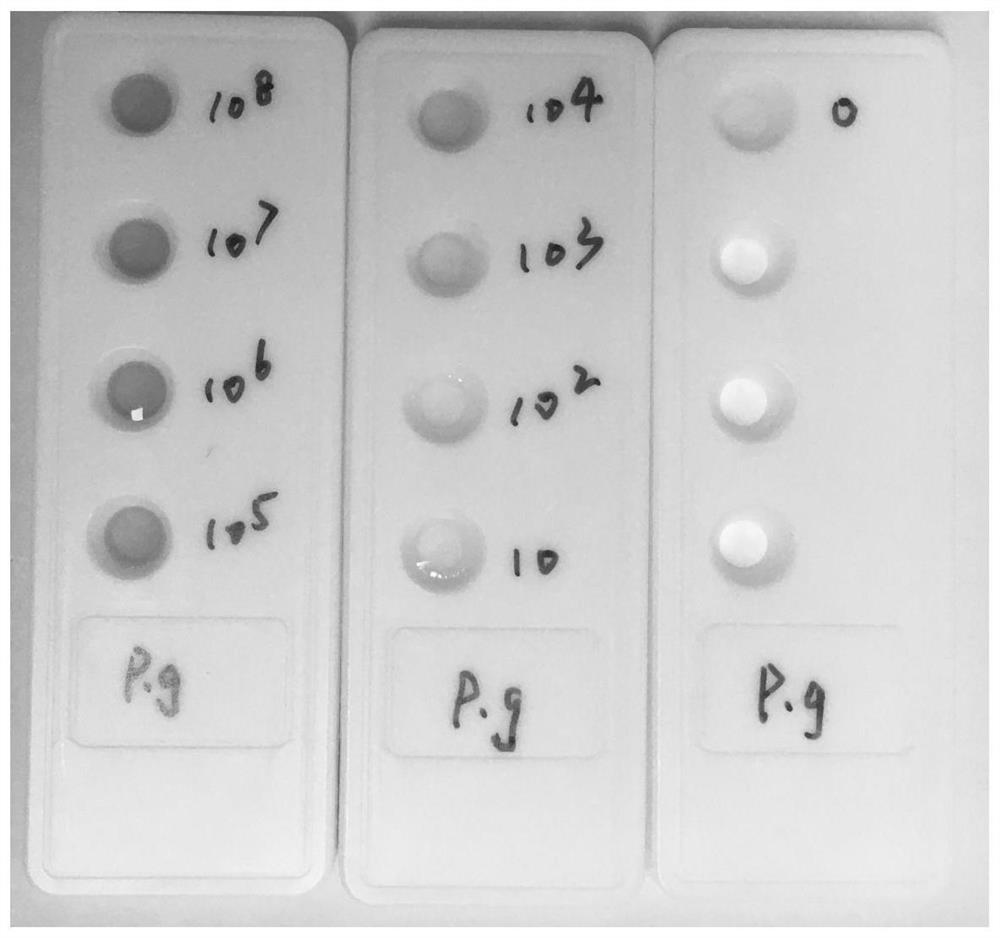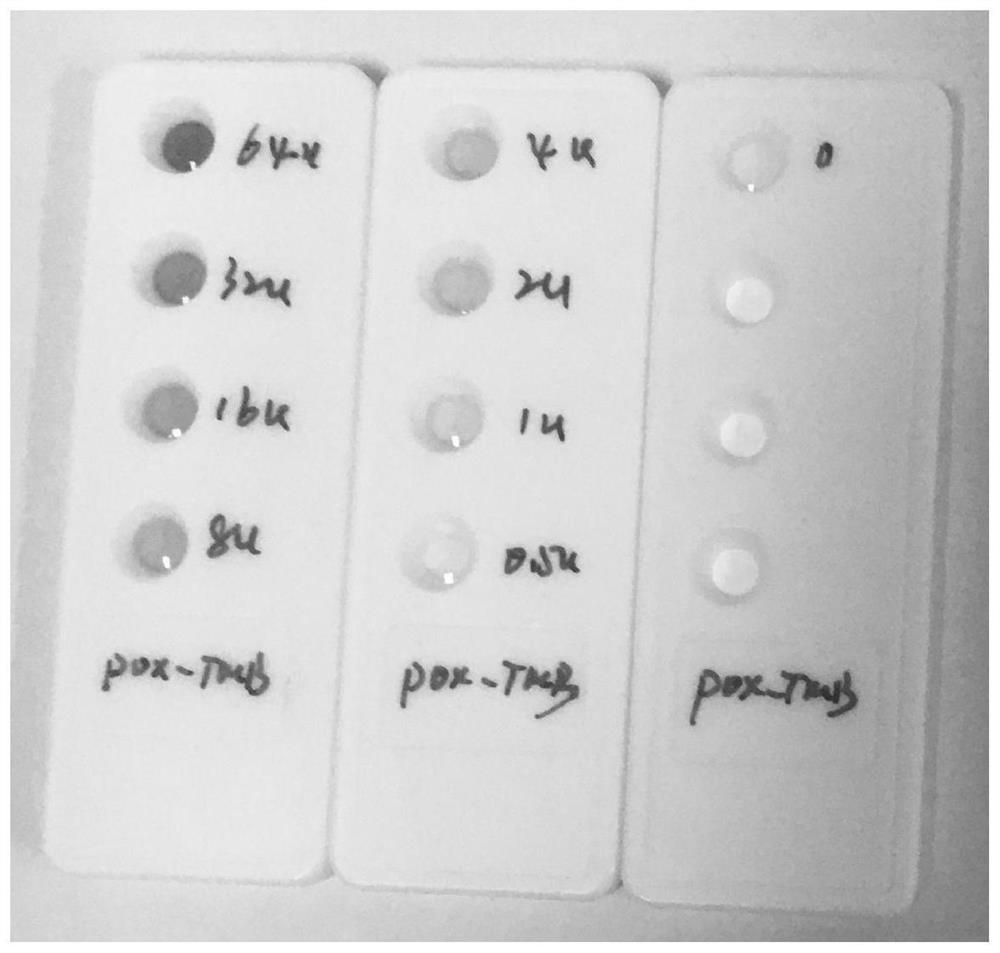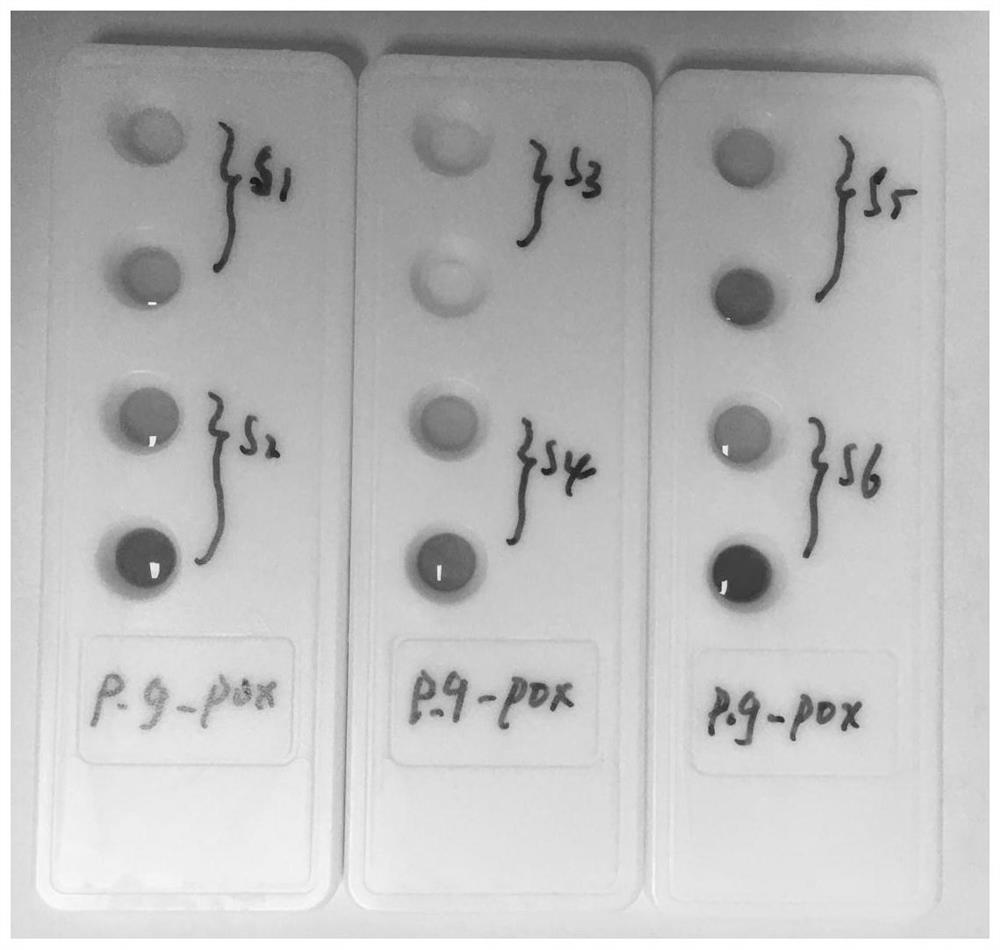Periodontal pathogen infection marker detection kit and detection method
A technology for detecting reagents and pathogenic bacteria, applied in the field of biological and medical detection, can solve the problems of lack of guiding significance in the detection of infection markers and formulation of treatment measures, and achieve the effect of preventing the occurrence of AD and preventing the deterioration of the disease.
- Summary
- Abstract
- Description
- Claims
- Application Information
AI Technical Summary
Problems solved by technology
Method used
Image
Examples
Embodiment 1
[0075] The following reagents were prepared for use in the detection experiments in the various embodiments of the present invention.
[0076] 1. Preparation of sample eluent
[0077] Prepare sample eluent according to the following formula
[0078] MES 4.26g
[0079] Deionized water 100ml
[0080] Adjust the pH to 6.5 and store at 2-8°C for later use.
[0081] 2. Preparation of the microwell coating of the microplate and the corresponding chromogenic solution
[0082] Prepare the detection hole coating solution and the corresponding chromogenic solution as shown in Table 1:
[0083] Table 1
[0084]
[0085] Blank microplates, also known as reaction cards, can be purchased directly from the market. The microporous plate consists of a bottom plate and a plate cover. The bottom plate is provided with a plurality of grooves (ie, micropores) for placing filter paper sheets. Before use, filter paper sheets are placed on the bottom plate, and the filter paper sheets are us...
Embodiment 2
[0088] Example 2 Detection of quality control strain-Porphyromonas gingivalis strain gingival protease
[0089] 1. Strain expansion:
[0090] a) Positive strains: After recovery of the Porphyromonas gingivalis strain, transfer to the Columbia blood agar plate, place an anaerobic bag, and incubate at a constant temperature of 37°C for 5-7 days until black colonies appear on the surface of the medium;
[0091] b) Negative strains: After recovering the strains of Streptococcus A, transfer them to Columbia blood agar plates, and culture them at a constant temperature of 37°C for 24-48 hours until grass-green hemolytic colonies appear in the culture medium;
[0092] 2. Prepare 0.5 McFarland turbidity unit bacterial solution: Scrape the positive and negative strains into sterile saline, adjust the concentration to 0.5 McFarland turbidity unit;
[0093] 3. Prepare bacterial solutions with different concentrations: 0.5 McFarland turbidity unit is equivalent to 1.5*10 8 Calculate CFU...
Embodiment 3
[0097] Example 3 Detection of gingival protease quality control enzyme-trypsin
[0098] 1. Prepare concentrated quality control solution: prepare 256u / ml trypsin enzyme solution with sample eluent;
[0099] 2. Prepare quality control products of different concentrations: dilute the concentrated quality control solution with the sample eluent, and prepare trypsin enzyme concentrations of 256u / ml, 128u / ml, 64u / ml, 32u / ml, 16u / ml ml, 8u / ml, 4u / ml, 2u / ml, 1u / ml, 0.5u / ml quality control products;
[0100] 3. Use a single-item coated microwell plate coated with gingival protease detection well coating solution II for the test, and add concentrations of 64u / ml, 32u / ml, 16u / ml, and 8u / ml to the 1-9 wells respectively , 4u / ml, 2u / ml, 1u / ml, 0.5u / ml, 0u / ml quality control products 30ul, gingival protease detection hole coating solution II corresponding color solution 30ul;
[0101] 4. Place in a constant temperature incubator at 37°C for 20 minutes, and observe the color change of the...
PUM
 Login to View More
Login to View More Abstract
Description
Claims
Application Information
 Login to View More
Login to View More - R&D
- Intellectual Property
- Life Sciences
- Materials
- Tech Scout
- Unparalleled Data Quality
- Higher Quality Content
- 60% Fewer Hallucinations
Browse by: Latest US Patents, China's latest patents, Technical Efficacy Thesaurus, Application Domain, Technology Topic, Popular Technical Reports.
© 2025 PatSnap. All rights reserved.Legal|Privacy policy|Modern Slavery Act Transparency Statement|Sitemap|About US| Contact US: help@patsnap.com



